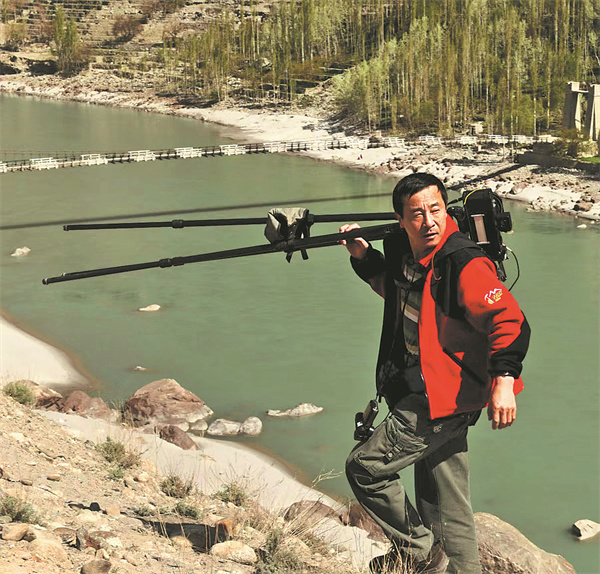

As he often returns to the same places where he has taken particular pictures during the past three decades or more, he has managed to record the changes of those places over that time, some due to climate change, like the retreat of a number of glaciers.
"A few glaciers or glacial landscapes have diminished, or actually vanished, over this period of time, and I was fortunate to witness them and present them in the album," he says.
Chinese scholars have described the book as "an encyclopedia of Tibet" because of its rich content.
"I feel like this book is like a university he built," says Wang Bing, professor from Central Academy of Fine Arts.
Wang did printmaking for the album.
"It contains his time in, and his images of, Tibet. It's like a version of The Arabian Nights, and he did it," Wang says.
Zhang has been modest, saying he is not resourceful enough to present an encyclopedia, but he does believe his work will help shed light on the plateau's charm.
"Early on, I approached photography in a rather superficial manner, solely seeking out beauty. However, as I began to take on specific shooting assignments, I came to realize that it wasn't about the quantity or grandeur of photos, but rather about figuring out what to shoot, how to 'manage' the subject being photographed, and whether I could offer a unique perspective on the world," Zhang says.
During the actual process, Zhang's approach was to first analyze the subject matter from the perspective of cultural studies and its connotations, in order to maximize the informational value of the resulting photos. "This approach significantly improved my efficiency," he says.
For example, when photographing at a temple, he says that he usually would only have a brief period of time, like half an hour or so, to capture the essence of the building's architectural features, structure and exhibits.
This required him to develop a discerning eye.
"I would take into account the subjects' date, literary and artistic value, as well as their aesthetic appeal," he says.
Although the extreme climate, daunting altitude, complex geography, and unknown dangers made each of his trips to the plateau more like a battle, the breathtaking sceneries captured through his lens were exhilarating and made everything worth it.
Despite the fact that Zhang has repeatedly promised his family that he would never return to Tibet to take pictures again, he couldn't help but break his promises over and again.
To this day, he still cannot put a definitive end to his journey.
Looking back over the past decades, Zhang says he feels fortunate and content to have seen landscapes that most people will not, to have ventured to places that many people would not dare to and to have touched things that others have not.
"I will strive to spread Himalayan culture and to make a lasting impact in my field. This is my life's mission, and one that will never fade," he says.